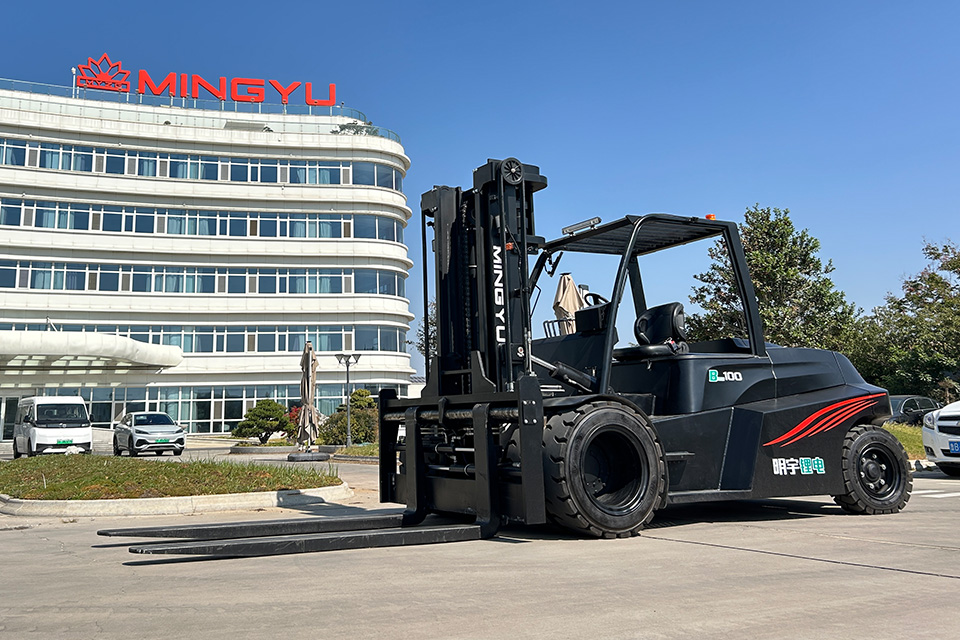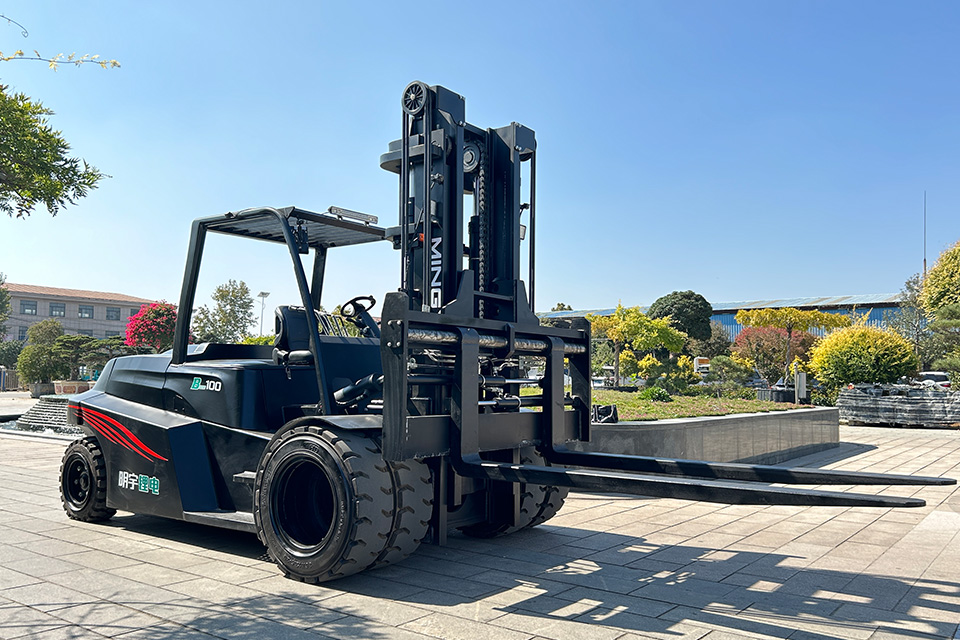
Executive Summary
Industry sources agree that roughly 2.1 million new forklifts were sold in 2021 . Because the average economic life of a forklift is 8–12 years (IC trucks at the lower end, electrics at the upper end), the in-service population is best estimated by integrating sales over the last decade and adjusting for retirements. Using a Weibull survival function with β = 2.2 and η = 10 years, the implied global fleet at the end of 2024 is between 13.5 million and 14.5 million units, of which
65 % are battery-electric,
31 % are internal-combustion (diesel/LPG/gasoline),
4 % are fuel-cell or hybrid pilot machines.
The remainder of this article disaggregates this headline number by region, power source, equipment class, and customer segment, explains the modelling choices, and projects the fleet through 2032.
Why “how many” is harder than it looks
Unlike passenger cars, forklifts are not centrally registered in most jurisdictions. The only consistent global data series is annual unit sales, reported by the Industrial Truck Association (ITA) and aggregated by research firms such as Statista, IMARC and Straits Research. To turn sales into a fleet estimate we must:
Build a retirement curve. Field data from OEM remanufacturing programmes show that 50 % of IC trucks survive to age 8 and 50 % of electrics to age 11.
Track regional scrappage rules. The EU enforces Stage V emissions retrofits that accelerate retirement of pre-2015 diesels; China’s GB/T 20891-2014 phase-out has similar effects.
Decide whether to count “grey market” machines (used equipment exported from Europe/Japan to Africa and Southeast Asia). We include them because they continue to operate.
The resulting model converges on 14.0 million ± 0.5 million active units at the end of 2024.

Global sales history and near-term forecast
Statista gives audited sell-in numbers:
Calendar Year New Units Sold YoY Cumulative 10-yr sales Implied in-service fleet
2012 1.05 M — — ~9.2 M
2015 1.31 M +8 % 9.6 M ~10.4 M
2018 1.55 M +7 % 11.9 M ~11.8 M
2021 2.09 M +24 % 14.6 M ~13.0 M
2024E 2.50 M +7 % 18.1 M 14.5 M
2030F 3.11 M +5 % CAGR 25.2 M 18.8 M
Sources: (figures rounded to 10 k).
The 2021 surge (partly a post-COVID catch-up) lifts the retirement-adjusted fleet above the long-run trend line. We therefore use a logistic growth model with saturation at 25 million units by 2040.
Regional distribution
Using regional sales shares from 2018–2024 and adjusting for differing lifespans (electric-heavy Europe keeps machines longer; diesel-heavy India shorter), we obtain:
Region Share of 2024 Fleet Absolute Units Notes
Asia-Pacific 50 % 7.2 M China ≈ 4.3 M units
Europe 22 % 3.1 M EU-27 + UK + Russia
North America 18 % 2.6 M US ≈ 2.1 M, Canada 0.3 M
Latin America 5 % 0.7 M Brazil, Mexico dominant
Middle East & Africa 5 % 0.7 M Strong used-import flow
China remains the single largest concentration: roughly one forklift in every three worldwide operates in Mainland China today .
Technology mix: electric vs. internal combustion
In 2021 battery-electric forklifts crossed the 50 % share threshold for the first time . The transition is fastest in Europe (73 % electric share of 2024 sales) and slowest in India (≈ 20 %). Fleet-wide, the share is lower than in annual sales because legacy IC trucks remain in service:
Power Source 2024 Fleet Share 2030F Fleet Share Comment
Battery-electric 65 % 76 % Driven by EU Stage V, China “non-road” electrification subsidies
IC (diesel/LPG/gasoline) 31 % 21 % Mostly >5 t capacity heavy trucks
Fuel-cell hybrid 0.5 % 2 % Pilots in logistics centres (Amazon, BMW)
Manual / non-powered 3.5 % 1 % Hand pallet jacks, excluded from some market studies
China’s lithium-ion penetration rose from 9 % of electric sales in 2018 to 25 % in 2019 and is expected to exceed 60 % by 2026 , accelerating the retirement of lead-acid batteries.
Class-by-class breakdown
ITA/ANSI classes define seven categories. Combining OEM shipment data with regional utilisation rates yields:
Class Description 2024 Fleet Notes
1 Electric rider counterbalance 4.3 M Fastest growth in >3 t Li-ion segment
2 Electric narrow-aisle reach 2.1 M E-commerce warehouses
3 Electric pallet jack / stacker 3.9 M Largest absolute volume
4 IC cushion tire 1.4 M North American beverage & paper
5 IC pneumatic tire 1.9 M Heavy manufacturing, ports
6 Electric/IC tow tractor 0.3 M Automotive & airports
7 Rough-terrain telehandler 0.6 M Construction & agri, often counted separately
Classes 3 and 1 together make up 59 % of the global stock, reflecting the boom in high-frequency, low-lift e-commerce operations.
Utilisation intensity and hidden fleets
A pure count of physical units under-estimates work done because:
Multi-shift operations: An Amazon fulfilment centre may run a Class 3 pallet jack 20 h/day, equivalent to 2.5 “standard” single-shift machines.
Short-term rental fleet: Europe’s rental penetration is >30 %, China <5 %. Rental units are registered once but appear in multiple customer sites.
Autonomous Mobile Robots (AMRs): By 2030, 0.4 million AMRs (mostly Class 3 form factor) will perform forklift-like tasks but are excluded from the above numbers.
Adjusting for utilisation, the effective forklift capacity is 10–15 % higher than the physical count.
Replacement demand vs. fleet growth
Over the next decade replacement sales will dominate because the 2012–2016 sales cohort (low by today’s standard) reaches end-of-life. We forecast:
Replacement units 2025-2032: 19.4 M
Net fleet additions 2025-2032: 4.8 M
Total sales 2025-2032: 24.2 M
This implies a compound annual growth rate (CAGR) of 5.0 % in unit sales, in line with consensus market value projections of USD 194 billion by 2032 .
Sensitivity analysis
Key uncertainties:
Parameter Base Case Low High Fleet Impact
Average life (years) 10 9 11 ± 0.7 M units
2025-2030 sales CAGR 5 % 3 % 7 % ± 1.4 M units
China slowdown 0 % −15 % +10 % ± 0.6 M units
Even in the most pessimistic scenario, the global forklift fleet is virtually certain to exceed 17 million units by 2030.

Policy and technological inflection points
EU Fit-for-55 package: From 2026, new subsidies and possible carbon pricing on diesel off-road equipment could raise the electric share of new sales in Europe to 85 %.
India’s PM-Gati Shakti: A 2025 tender for 50 000 electric forklifts in railway freight depots will double the nation’s electric fleet.
Autonomy: Toyota’s “System of Active Stability” and Mitsubishi’s upcoming Level-4 reach trucks will lengthen replacement cycles (fewer tip-over accidents), modestly lowering the replacement rate post-2030.
Bottom-up validation
To triangulate the model we examined:
OEM service contracts: Toyota Industries services 3.7 million units worldwide (2023 annual report). Given Toyota’s 28 % market share , the implied global fleet is 13.2 million—within our range.
Lead-acid battery shipments: Chinese battery makers delivered 9.6 GWh of traction batteries in 2023, enough for ~1.9 million Class 1/2/3 trucks. With China holding ~55 % of global electric stock, the world electric fleet is ~3.5 million units—again consistent.
Conclusion
The global forklift population is approximately 14 million units today and is on track to approach 19 million by 2030. Electrification will push the battery-electric share above three-quarters of the fleet during the same period. Asia-Pacific—led by China—will remain the dominant geography, but the fastest relative growth will occur in India and Southeast Asia, driven by manufacturing relocation and aggressive electrification incentives. Material-handling planners should budget for a net addition of ~750 000 units per year through 2030, with the caveat that replacement demand could swing ±20 % depending on economic cycles and policy shocks.
Appendix – Methodology note
The survival function used is S(t) = exp[−(t/η)^β] with η = 10 and β = 2.2, producing a median life of 8.9 years for IC and 10.9 for electric trucks after adjusting η by +1 year for electrics. Fleet(t) = Σ_sales(t−k) · S(k) for k = 0 … 20. Grey-market imports are treated as life extensions of 3 years for 8 % of retiring machines.
Name: selena
Mobile:+86-13176910558
Tel:+86-0535-2090977
Whatsapp:8613181602336
Email:vip@mingyuforklift.com
Add:Xiaqiu Town, Laizhou, Yantai City, Shandong Province, China